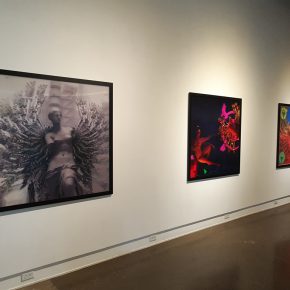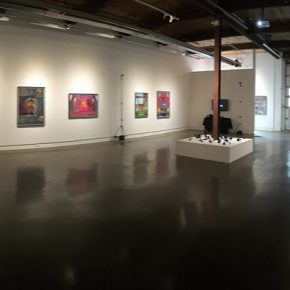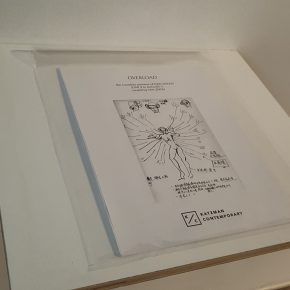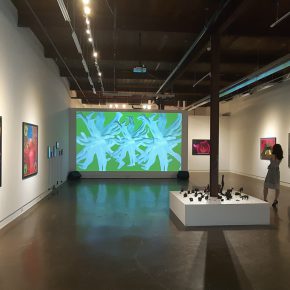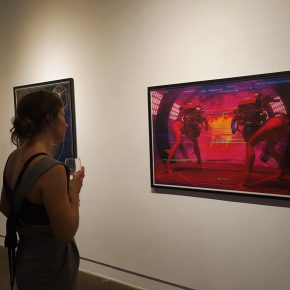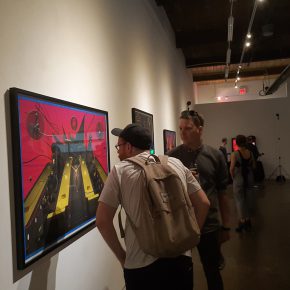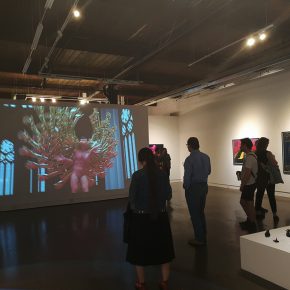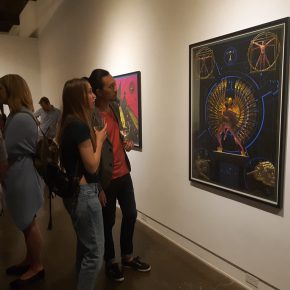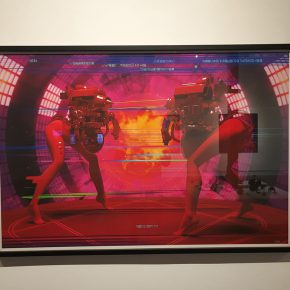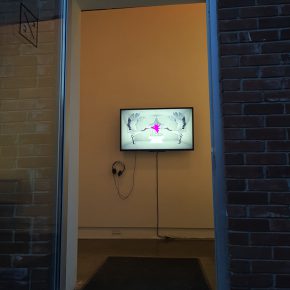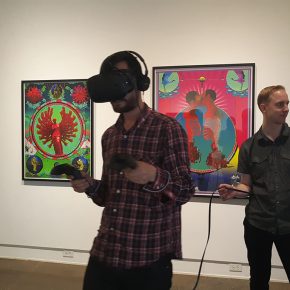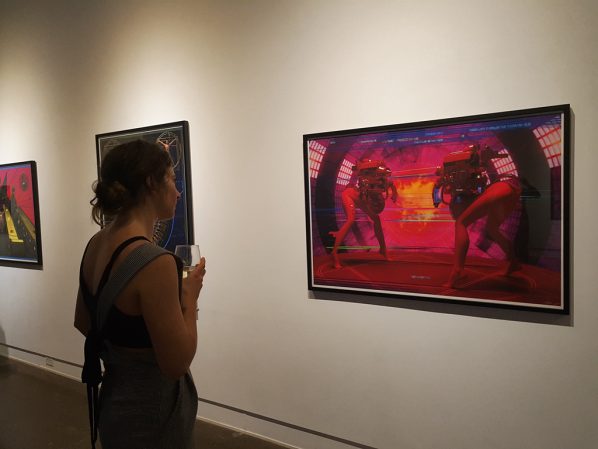
Posthuman Wonderland
Fascinated with the ways mobile phone communication, computer technology, and internet media have transformed human reality, artist Tian Xiaolei, like a contemporary Peter Pan, uses digital and plastic art making tools to create work that envisions a new world of human evolution. In his universe, the distinctions between animal, human, and machine are discarded, and post-gender recognition is applauded. The glamorous, hyper, hilarious, and erotic visual depictions in his art arouse the feeling of a Bosch-like wonderland filled with exotic and fantastic depictions but without the guilt-and-punishment religiosity.
Inspired by Kevin Kelly’s concept that technology is not alien to human life but an extension of life and human beings are not the end of evolution but a transitionary existence between natural life and artificial products, Tian Xiaolei attempts to advocate the world in which the polarized semiotics of machine and organism, matter and consciousness, art and science are deconstructed, and all these boundaries are blurred and transgressed. Inre-imagining the new revolution and re-creation of the Human as species (Homosapiens) at the time of technology and media eroding human organism, he sees that we can be emancipated from the linear evolutionary discourse of history. We can embrace a new Creation that human, machine, and media form a new being. We can live in a new reality that the past, the present, and the future together forms an enlarged consciousness, in which dream, fantasy, and desire are not enclosed in mind but perform in a perceptible space. We will even allow myth and religion come into play as illusions and images, the virtual and the real are actually one.
Tian Xiaolei was not initially aware but actually manifest the radical ideas of some leading thinkers in past three decades, Donna Haraway’s theory of cyborg and her development of post-humanism,?Cosmopolitics and hybrids of Bruno Latour and Isabelle Stengers, the info sphere and the Fourth Revolution of Luciano Floridi, among others. It is very much a more compassionate, open, humble and positive attitude that admits our own existence is infinitely entwined with the world at large: “the inhabitants of the world, creatures of all kinds, human and non-human, are wayfarers (Haraway)”.
His works also remind us of the futurism and the surrealism artists in the early 20th century artists who created mechanomorphic works, such as Francis Picabia, Marcel Duchamp, Jean Tinguely, Max Ernst, Jean Cocteau, Salvador Dalí and René Magritte. Picabia wrote: “The machine has become more than a mere adjunct of life. It is really a part of human life...perhaps the very soul…” These artists penetrated into a terrain where the anthropocentrism fiction cannot be written exclusively and be superior to other fictional worlds. There is not only one way to imagine the world beyond existing epistemology, and to wonder who we are and what will we become.
Informed by his art education and visual experience, Tian Xiaolei freely appropriates images from art history and different cultures, such as Michelangelo, René Magritte, and Buddhism images. It is surprisingly natural that surrealism and Buddhism images have an intimate association with his posthuman imagination, maybe in the realm of subconsciousness we are freer to accept that the boundaries that define and limit human being are actually a lie.
Our time now is like no historical era before, technology, the internet, and media have notonly become our living environment but also our internalized existence. On one hand, Tian Xiaolei’s work entertains, affects and also challenges viewers to face this new world, in which he finds inspiration to “make the existing culture, science, technology, and body make love to each other, and give birth to the unknown and the interesting things.” But on the other hand, there is also a sense of precariousness and losing-gravity, a nostalgia sentimentality perpetuated with loneliness and longing for love. He borrows elements of René Magritte’s works and pays homage to the artist, as an expression of trying to dwell poetically in this uncertain but euphoric new world. In his sexy, flamboyant, bewitching images, life vitality vibrates through forms, imagination floats in the space, erotic impulse pulsates with rhythm, and our contemporary time finds expressive forms in a mixture of posthuman surrealism images where everything is both myth and reality in a fluid of time and space.
Yan Zhou(curator), May, 2017, Toronto.
References:
Haraway, Donna, “A Cyborg Manifesto: Science, Technology, and Socialist-Feminism in the Late Twentieth Century”, The Cybercultures Reader, eds. David Bell and Barbara M. Kennedy, Routledge, 2000, pp 291-324.
"Tentacular Thinking: Anthropocene, Capitalocene, Chthulucene." Tentacular Thinking: Anthropocene, Capitalocene, Chthulucene - Journal #75 September 2016 – E-flux. N.p., n.d. Web. 24 May 2017.
Grebowicz, Margret, Helen Merrick, and Donna Haraway. Beyond the Cyborg: Adventures with Donna Haraway. New York: Columbia UP, 2013.Print.
Stengers, Isabelle. CosmopoliticsI, Bononno, R (trans.), Minneapolis: University of Minnesota Press (2010)
Stengers, Isabelle. CosmopoliticsII, Bononno, R (trans.), Minneapolis: University of Minnesota Press (2011)
Latour, Bruno. We Have Never Been Modern. Cambridge, MA: Harvard UP, 2002. Print.
Floridi, Luciano. The 4th Revolution: How the Infosphere Is Reshaping Human Reality. Oxford: Oxford UP, 2016. Print.
"The Child Carburetor." Guggenheim. N.p., 22 May 2017. Web. 30 May 2017. <https://www.guggenheim.org/artwork/3409>.


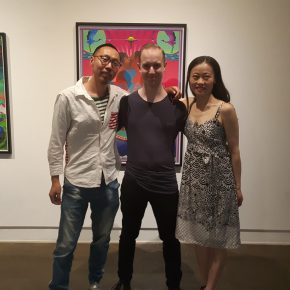

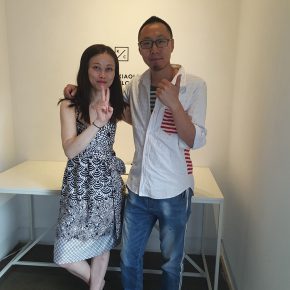
-ALEX-McLEOD(New-Media-Artist-Torondo)-Yan-Zhou(Curator-Torondo)-290x290.jpg)
